
Knight
The knight is the trickiest piece in chess! It moves very differently than other pieces and can deliver the dreaded fork or even a smothered mate!
Here is everything you need to know about knights!
The Knight
When a game begins, each side starts with two knights. White's knights start the game on b1 and g1, while Black's knights begin on b8 and g8.
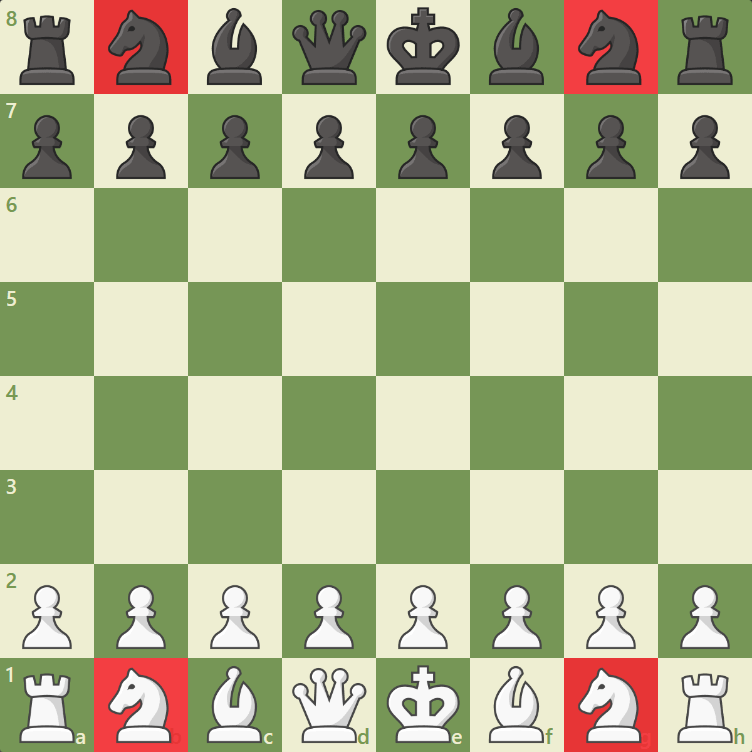
The knight is unique for two major reasons: 1) it is the only piece that can hop or jump over another piece, and 2) every time it moves it alternates from a light-square to a dark-square, or vice-versa.
The knight is considered a minor piece (like a bishop) and is worth three points. It is considerably more valuable than a pawn (which is worth one point), equally valuable as a bishop (also three points), but less valuable than a rook (five points) and a queen (nine points).
How The Knight Moves
The knight moves multiple squares each move. It either moves up or down one square vertically and over two squares horizontally OR up or down two squares vertically and over one square horizontally. This movement can be remembered as an "L-shape" because it looks like a capital "L".
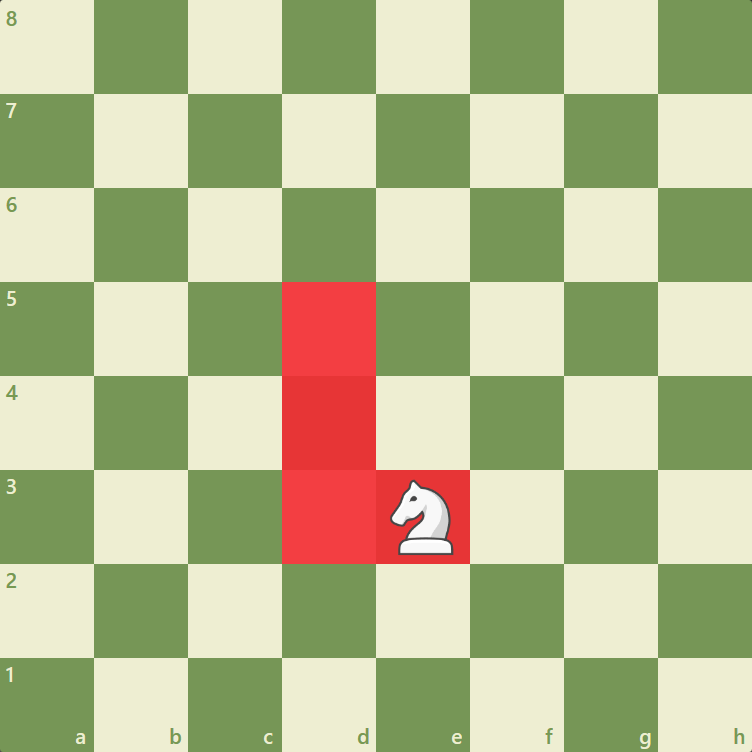
Another unique aspect of the knight is that it always alternates between the two colors. If a knight starts on a light-square and makes a legal move, it always ends on a dark-square. If a knight starts on a dark-square, it always ends on a light-square. This is the opposite of a bishop, which is confined to one square color for the entire game.
In the diagram below you can see all of the potential knight moves. Note that the knight is on a light-square, so every legal move results in landing on a dark-square.
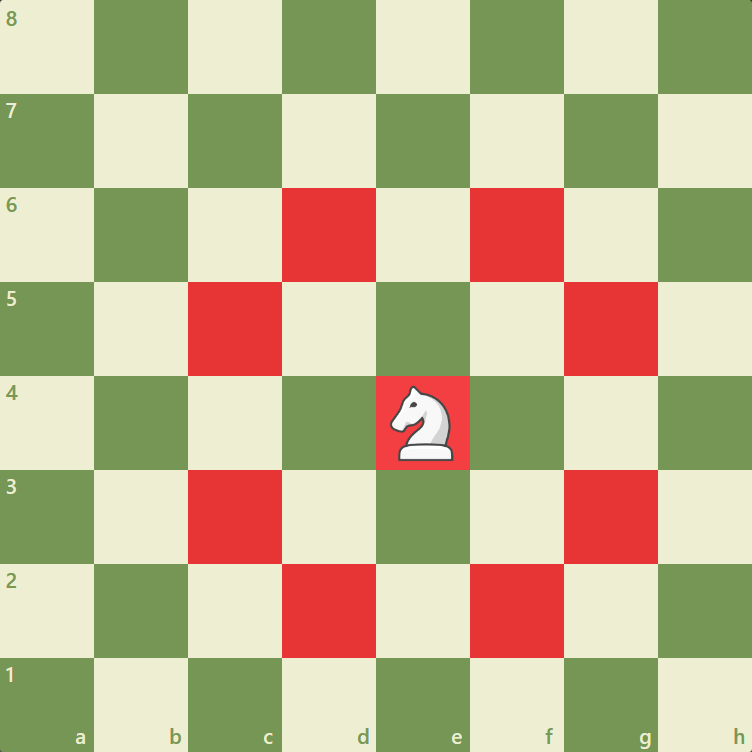
Unlike any other piece, the knight can hop over other pieces. In the diagram below, White's knight on the b1-square can jump over the pawns on the second rank and move to the squares a3 or c3. If it were any other piece, it would be unable to move at all, as it would be blocked on all sides.
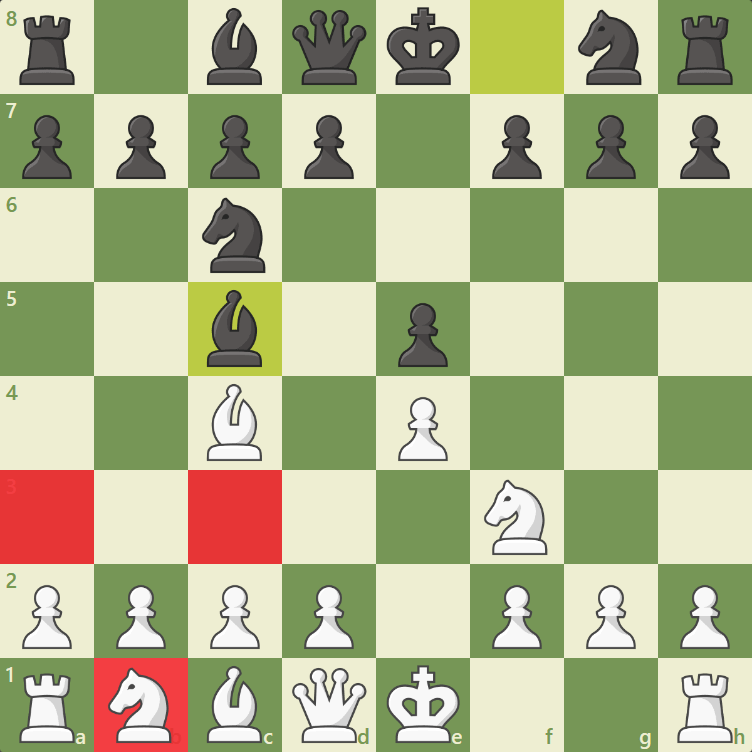
Always remember that a knight captures a piece only if it lands on the occupied square, not if it jumps over it! Another cool thing about knights? They can deliver devastating forks and smothered mates!
Forks And Smothered Mates
A fork is when two or more pieces are attacked simultaneously. Even though this can be achieved by other pieces, the knight is the best-suited piece for this type of attack because it can attack multiple pieces that are more valuable than itself in a single move.
In the position below, Nxd7 was just played by White—notice how the black queen and both rooks are all attacked simultaneously? That's a great fork!
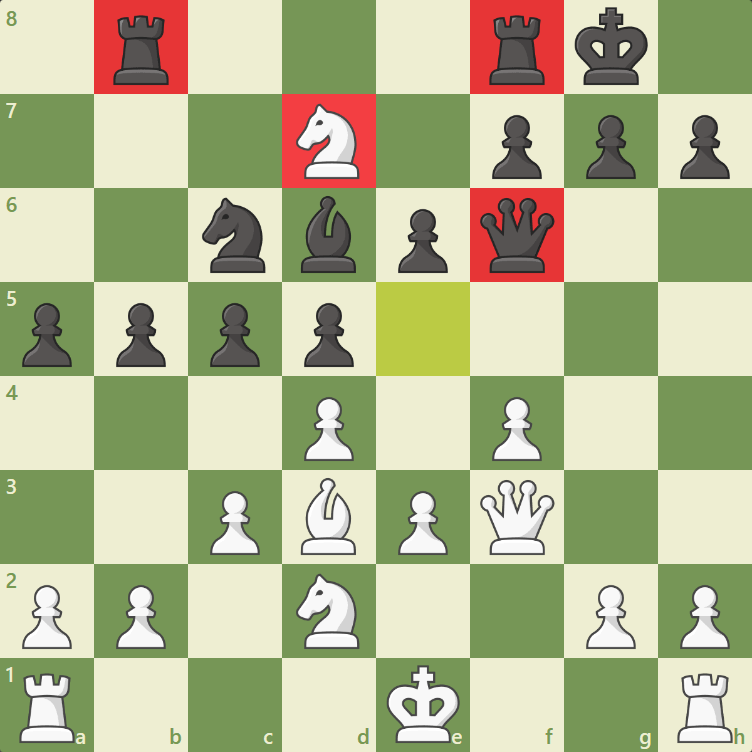
An advanced technique that only a knight can perform is called a smothered mate. A smothered mate is the name for a checkmate that occurs when a king is surrounded by their own pieces and cannot move out of check. Here is an example of a smothered mate. Note how Black's king is surrounded by its own pieces after Nf7#!

Test
Let's test you to see if you can recognize how a knight moves. In the following position, can White's knight on the f7-square capture Black's queen?
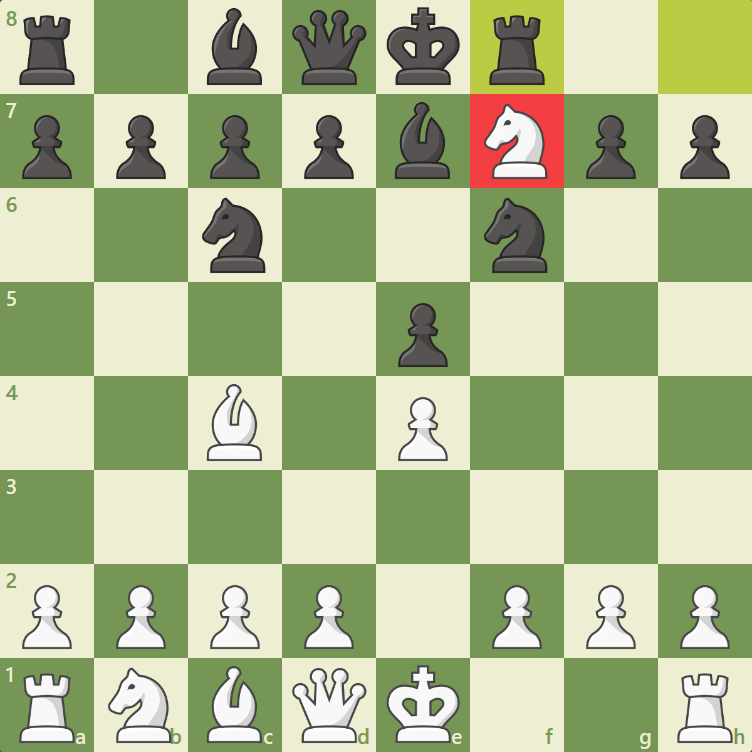
Yes, the knight can capture the queen on the d8-square! Let's try another one—can White's knight on the e4-square move to the d6-square?
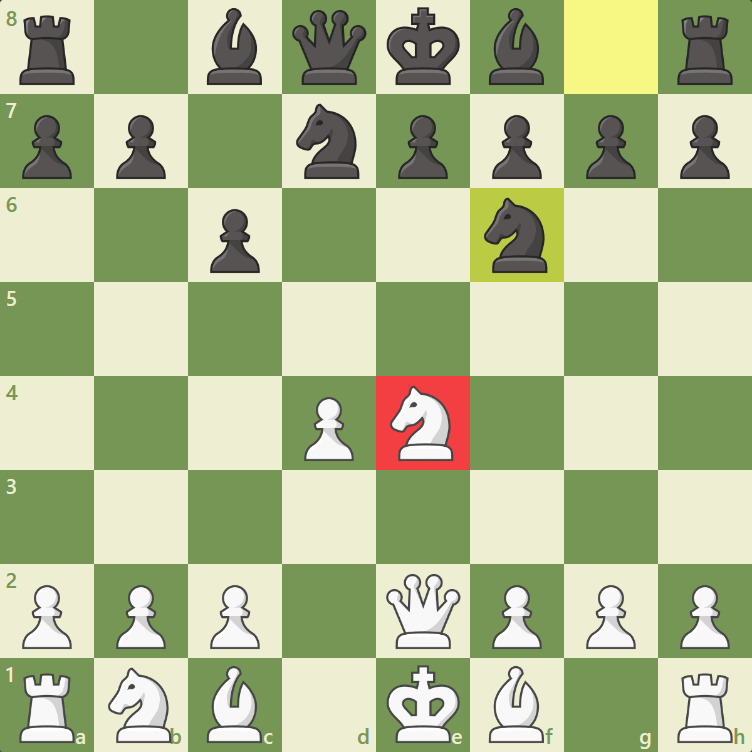

Conclusion
You now know where to place the knights when a game is started, how the knight moves, and what a fork and smothered mate are. Enjoy your new knowledge of the knight, and attack your opponents with this tricky piece!
Watch the Video Lesson
Reading an article is a wonderful way to learn new ideas and concepts, but watching a video lesson can help even more! Below you can find a video lesson about the knight—check it out!







